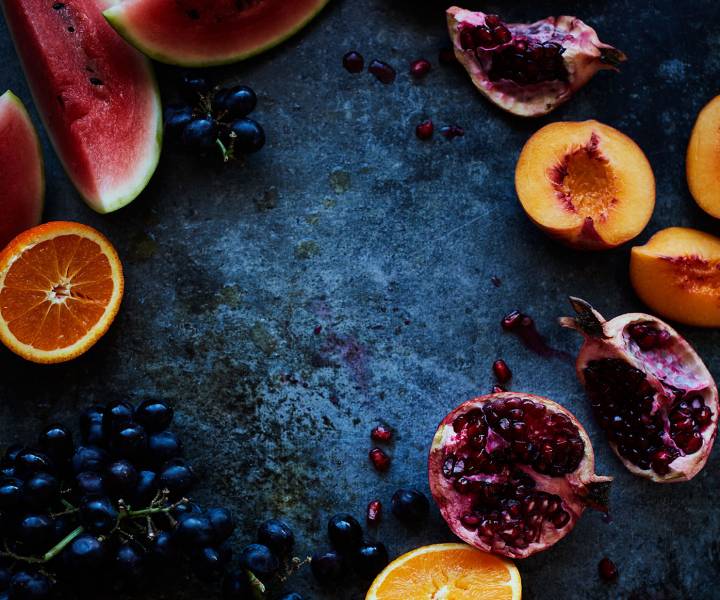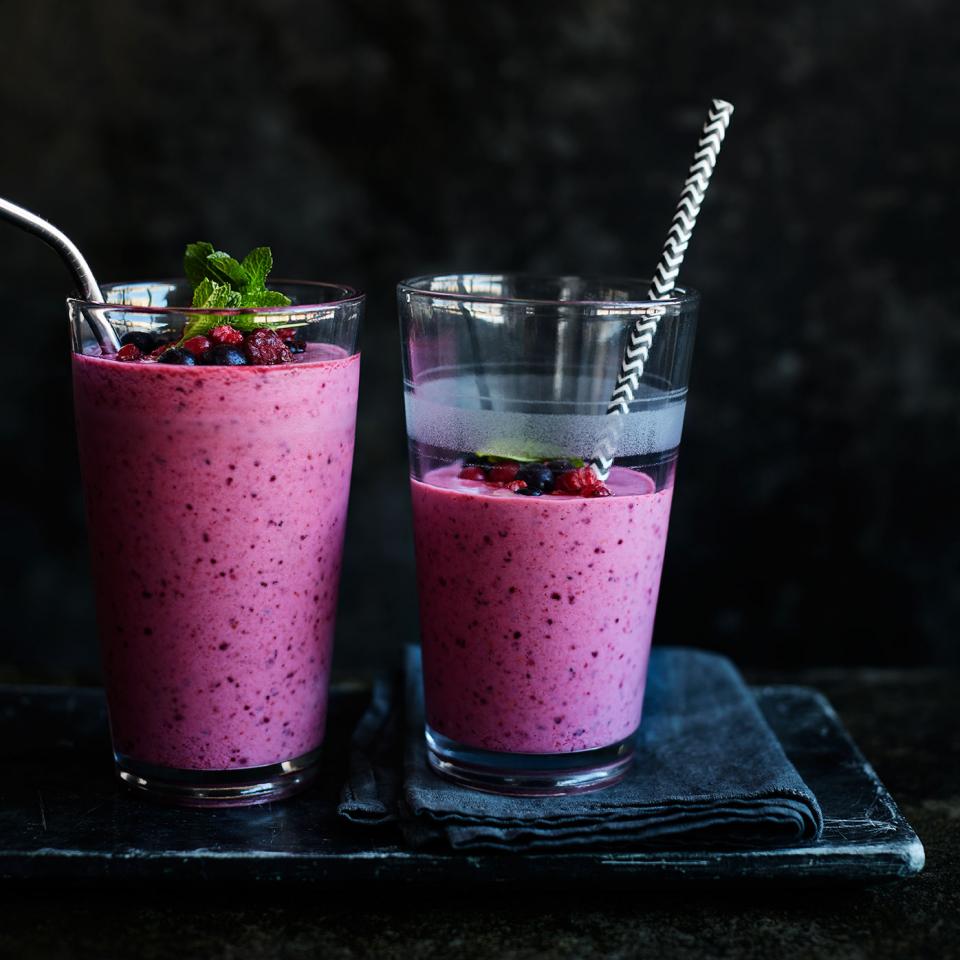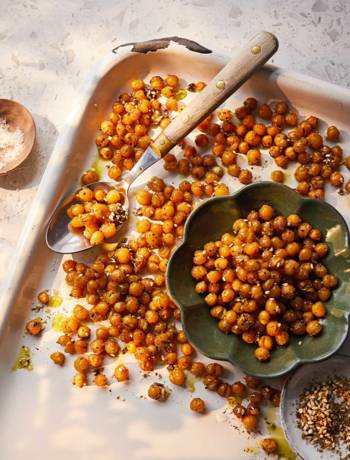Health
How much fruit should you really be eating?
by Sarah Maber

An easy way to get your five-a-day – or a sweet snack that will send blood sugar soaring? Sarah Maber finds out the truth about fruit.
Easy-peel satsumas, punnets of grapes, juicy mangoes, snack-sized bananas...With summer holidays looming, many of us are ditching calorific between-meal treats and choosing fruit instead. And why not? Fruit is an easier, more palatable way to reach our five-a-day than chomping down on endless vegetables. It contains nutritious superstars like fibre, vitamins and antioxidants. It comes packaged in its own handy skin, mostly in ready-formatted portion sizes – and best of all, it tastes just a little bit treaty. Indeed, sales figures released by Asda earlier this year suggest that fruit is replacing veg in our shopping baskets – blueberry sales have soared by 53%, overtaking produce like potatoes and broccoli, and we spent a total of £604 million on grapes in 2017, making them our best-loved fruit.
But that doesn’t mean that we should all be constantly munching our way through the fruit bowl. Fruit is high in a sugar known as fructose, and even though it’s coming from a healthy source, it’s still, well, sugar. ‘In simple terms, table sugar is a mix of glucose and fructose and so is the sugar in fruit,’ says dietitian Dr Trudi Deakin, founder of xperthealth.org.uk. ‘The body cannot distinguish between the sugar found in table sugar and the sugar found in fruit.’ And it’s not just the sugar content of fruit that concerns Dr Deakin. ‘Fruit is cultivated differently now – it is bigger, more uniform, sweeter and contains fewer seeds,’ she says. ‘It also contains fewer phytonutritients and more sugar – it’s like natural candy.’
She’s also concerned about our constant snacking – particularly when it comes to weight loss. ‘There is no need for a healthy individual to snack,’ she says. ‘And when people do snack, they tend to consume foods such as fruit that are high carbohydrate. Carbohydrate is digested into its building blocks, namely glucose and fructose, which stimulate the release of insulin. The problem is that insulin is an energy storage hormone, and it’s very difficult for people to utilise their stored energy (eg body fat) as an energy source when insulin levels are high.’
Dr Deakin steers us towards lower-sugar fruit, and advises that we eat no more than three meals a day – a view shared by Jenny Phillips, nutritional therapist, in The Diabetes Weight Loss Cookbook (Kyle Books, £20). She recommends that anyone who has concerns about blood sugar, or who is trying to lose weight, should avoid tropical fruits. ‘Although fruit is good for you, especially compared to refined and processed foods, it is still naturally quite sugary and so can raise your blood sugar levels. Berries are low in sugar, so are a better choice than high-sugar tropical fruits, such as mango, pineapple and banana.’
And guard against letting fruit crowd out veg on your shopping list. ‘Vegetables are rich in micro-nutrients,’ says Dr Deakin, ‘and provide less sugar. A small 80g banana (130g with skin) or a small handful of grapes (80-100g) can provide 15g carbs (equivalent to a slice of bread) but a large banana or bunch of grapes can provide three times this amount. In comparison, a portion of veg will generally provide fewer than 5g carbs and this will be starch, not sugar.’
Deakin’s approach-fruit-with-caution view isn’t shared by everyone, however.‘In my view, the UK has such a low consumption of fruit and veg that an increase in any type of fruit would be useful,’ says dietitian Dr Carrie Ruxton. ‘This can include one glass of 100% fruit juice a day (150ml counts as a portion of fruit) as well as a handful of dried fruit, tinned fruit in juice, frozen fruit and stewed fruit. We should also boost veg too. “Eating the rainbow” is a nice concept to prevent individuals having five portions of bananas, for example.’
But what if you’re concerned about sugar levels? ‘As a general rule of thumb, I would recommend that people consume more vegetables and salad ingredients than fruit portions in the day – for example two or less for fruit and three or more for veg/salad portions,’ says Dr Deakin. ‘Make sure any fruit you do have is part of a meal (unless you have to snack for health reasons).’
‘I would start with personal health goals and preferences and go from there,’ says GP Dr David Unwin, who specialises in low-carb eating (@ lowcarbGP). ‘If you want to lose weight or are worried about Type 2 diabetes, how sugary the fruit is becomes important. Scientists have researched this for us, and came up with the glycaemic index (GI). This predicts how each fruit may affect our blood glucose and is the basis of the low GI diet.
‘With respect to fruit, there is a spectrum from the most sugary, tropical fruits – which spend a lot of time getting sweeter in hot sunshine, like bananas or mangoes – to the least sugary, like raspberries. People are often amazed to hear a banana is like eating five or six teaspoons of sugar in terms of your blood glucose. The same weight of strawberries is equivalent to a quarter of that! Another trap is fruit juice. A 200ml glass of pure apple juice is the same as four teaspoons of sugar! So personally, as someone aged 60 with diabetes, I tend to drink water, enjoy my fruits whole and in fairly small portions (usually berries like blackberries, raspberries, strawberries and blueberries).’ As with most things, it seems, a moderate approach is probably best.
High sugar:
Grapes
Daily portion: a handful
Lowdown: High in protective phytochemicals – but a small handful of grapes contains around 14g sugar.
Bananas
Daily portion: one banana
Lowdown: Bananas are a source of potassium, but a small one contains 14g sugar.
Mangoes
Daily portion: 1⁄2 mango
Lowdown: High in betacarotene – and fructose.
Medium sugar:
Orange
Daily portion: 1 orange
Lowdown: Eat whole rather than juicing – most nutrients are in the pulp. Each contains 9g sugar.
Nectarines
Daily portion: 1 nectarine
Lowdown: Medium to low on the sugar scale, a small nectarine contains 11g sugar; they are a good source of vitamin C.
Low sugar
Berries
Daily portion: a handful
Lowdown: High in nutrients and significantly lower in sugar than most fruits. Eat fresh or frozen.
Lemons and limes
Daily portion: squeeze liberally
Lowdown: Use these to add flavour to food and drink.













